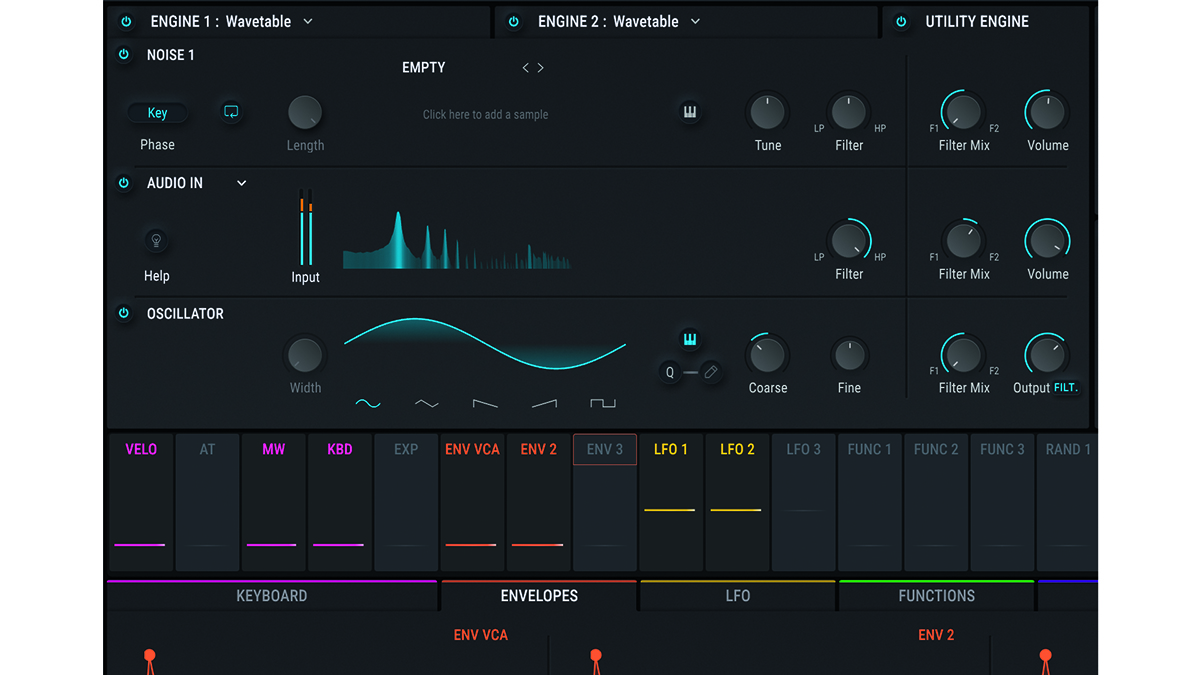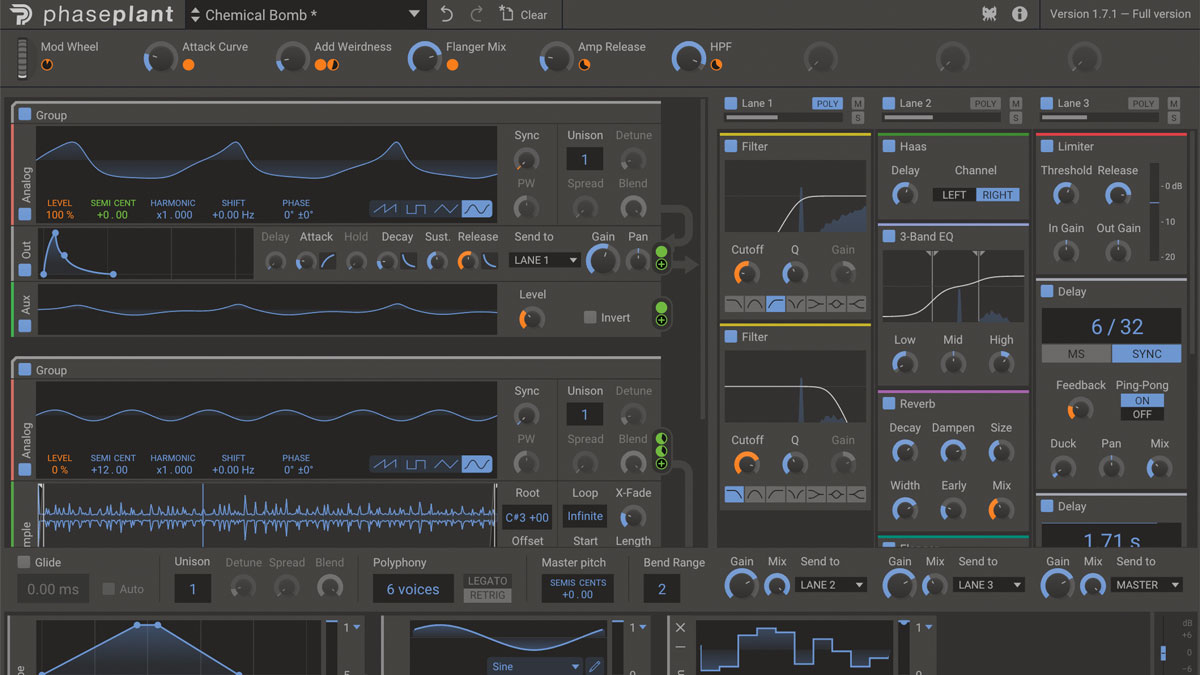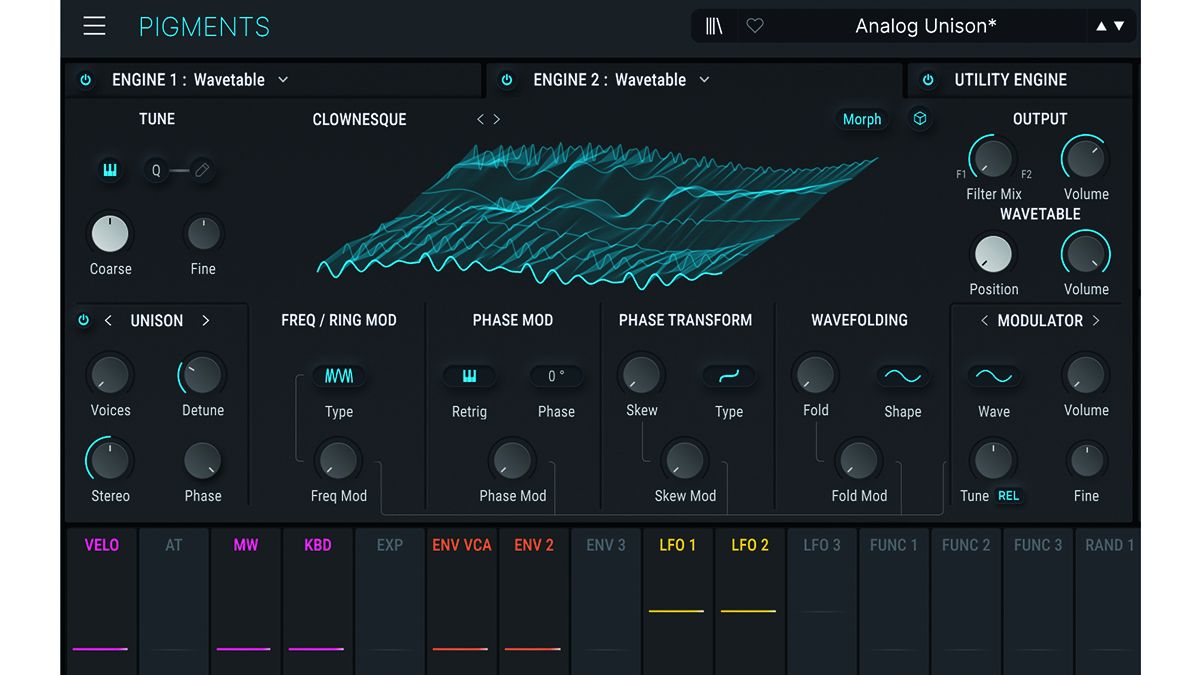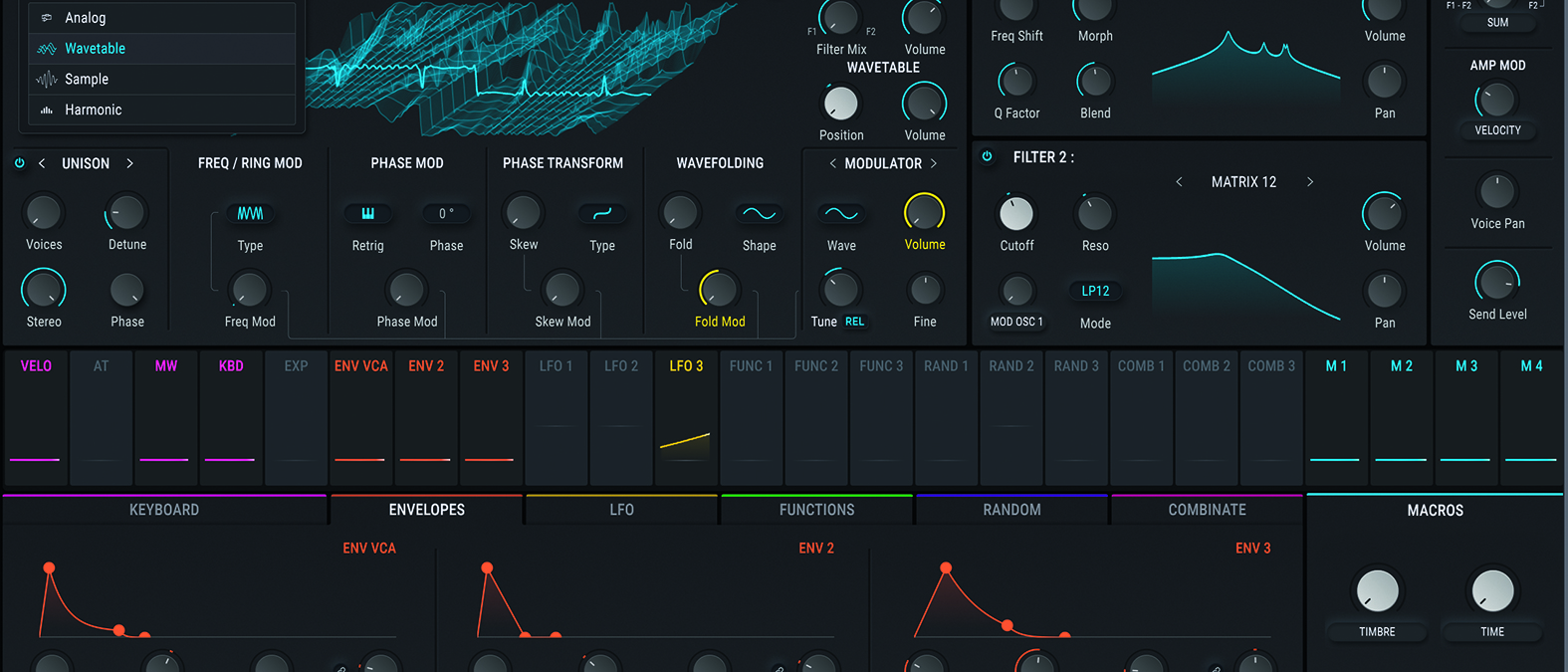MusicRadar Verdict
Pigments is still the synth that crams in the power and flexibility, but presents it to you in a very easy to use way. One of the best sound design tools around.
Pros
- +
Love that audio in functionality.
- +
New sequencer and arp extras are great .
- +
Nice UI tweaks and Play area.
- +
Sounds, sequencing and modulation as amazing as ever.
Cons
- -
The price is high, but there are plenty of sales.
MusicRadar's got your back
Arturia Pigments 5: What is it?
While Arturia’s V Collection bundle tries to do everything ‘vintage’ in 39 plugins, the company’s Pigments is trying to cover all modern synthesis bases in just one plugin. Since 2018, it’s been doing this very well, gradually building up enough synthesis power to try and be your one and only softsynth choice when you need contemporary sounds in your music.
Perhaps more importantly, it’s also aiming to be the tool you turn to when you want to design more sounds. Sequencing and modulation options take you on dynamic journeys, and everything has always been beautifully realised to make those expeditions wonderful and easy. What can any update add, then? Surprisingly, with version 5, the answer is quite a lot.

Arturia Pigments 5: Performance and verdict
We’ll cover the main Pigments synth philosophy in our At its core section below if you are new to the synth, and focus on the updates first.

• Kilohearts Phase Plant
It takes a more modular approach, perhaps, but Phase Plant is also one of the most flexible synths around.
• XFer Records Serum
Still the standard for softsynths, Serum does wavetables and more.
Pigments 4 was what you might call a ‘decent’ step up – not exactly revolutionary. And on the face of it, v5 delivers more tweaks than massive bolt-ons, too: extra sounds, upgraded sequencing and scale features, better CPU efficiency, external audio processing and a refined UI. But while these might not sound revolutionary, each covers quite a wide gamut. UI improvements, for example, include a sleek new Play view that really does improve workflow by simplifying the layout and homing in on the important stuff.
CPU efficiency has been improved with the option to use multiple cores of your computer’s CPU. It’s rather like ‘switching all power to front deflector screens’ and will make Pigments run more slickly across multiple tracks.
We’ve deliberately sucker-punched you by starting with two less interesting updates though; the real fun starts with routing external audio through Pigments. You do this through the Utility engine, selecting Audio In via the second Noise source. There will be a certain amount of sidechaining or bus routing here, but once you get audio in, this can be a gloriously creative process – indeed using Pigments filters and effects might make you rethink your use of your existing plugins as processors.
Next are new Playmodes for the sequencer and arpeggiator – letting you change pattern direction, for example – and new one-click Generation settings. These let you apply varying levels of randomisation to parameters – very easy to do and very easy to get huge (or not so huge) variations in patterns, which can be an inspiring process. New Scale options allow you to create patterns in set scales and lock them there, or apply scales to other patterns. They can be either Traditional or Generative, the latter used in conjunction with the Generation settings mentioned above.
Most notable of the remaining updates are 150 new presets. These can be selected by the lovely browser from the dropdown menu which, with its many categories, might surprise you at how varied – between traditional and modern – Pigments can sound.

At its core
To those new to Pigments, the core of it is its engine setup and where it covers so many sonic bases. You get two main engines, plus a Utility. The main two options can access four different types of synthesis: Analog, Wavetable, Sample and Harmonic. As you load in a different type, so the section of the UI gives way to the parameters of that type.
Select Analog and get three standard analogue oscillators. The Wavetable option is dominated by the central graphic with further wavetable options loaded with a dropdown menu (which handily shows wavetable additions by version number, revealing 63 extras for v5). The third Sample synthesis is focused on granular parameters, while the final Harmonic synth engine is additive based.
Utility is effectively a third engine with a VA oscillator (you can use as a sub) plus two noise sources. It’s designed to play a supporting role, but can be very important, in processing external audio, for example.
A bunch of fives
Normally we’d conclude by answering the ‘is it worth upgrading?’ question, but since v5 is a free upgrade, that’s a no-brainer. But what about buying Pigments from scratch? Well, it isn’t cheap at €199 – in fact, that makes it one of the premium softsynths out there in terms of cost. But it’s often on sale (half-price as we write this), and if further updates will be free like this one, then you might be investing in a great softsynth future.
As beautiful-looking and sounding as it is, it’s the fun and ease of creating more that are its strength
Either way, you are getting one of the most flexible synths out there, and, even more importantly, one of the easiest to use. And that is still Pigments’s main strength: while there are great sounds in there, it’s the fun and ease of creating more that are its strength. As beautiful looking and sounding as it already is, Pigments is still one of the finest tools to take you on that sound design cruise you’ve always promised yourself you’d have one day.
MusicRadar verdict: Pigments is still the synth that crams in the power and flexibility, but presents it to you in a very easy to use way. One of the best sound design tools around.
Arturia Pigments 5: The web says
"Pigments 5 grabs the attention as soon as you play any of the presets from its impressively vast collection."
MusicTech
Arturia Pigments 5: Hands-on demos
Arturia
Folia Soundstudio
Jon Audio
Arturia Pigments 5: Specifications
- MacOS 11+. 4GB RAM. 4 cores CPU, 3.4 GHz (4.0 GHz Turbo-boost) or M1 CPU. 3GB free hard disk space. OpenGL 2.0 compatible GPU.
- Windows 10+ (64-bit). 4GB RAM. 4 cores CPU, 3.4 GHz (4.0 GHz Turbo-boost). 3GB free hard disk space. OpenGL 2.0 compatible GPU. ARM processors not supported on Windows.
- Works in Standalone, VST, AAX, Audio Unit, NKS (64-bit DAWs only).
- CONTACT: Arturia
- BUY FROM Plugin Boutique
Andy has been writing about music production and technology for 30 years having started out on Music Technology magazine back in 1992. He has edited the magazines Future Music, Keyboard Review, MusicTech and Computer Music, which he helped launch back in 1998. He owns way too many synthesizers.
“Excels at unique modulated timbres, atonal drones and microtonal sequences that reinvent themselves each time you dare to touch the synth”: Soma Laboratories Lyra-4 review
“I used everything I knew about music”: How Green Day exceeded expectations with their most ambitious song
YouTube just added AI tools that makes musicians, library music and video editors redundant














